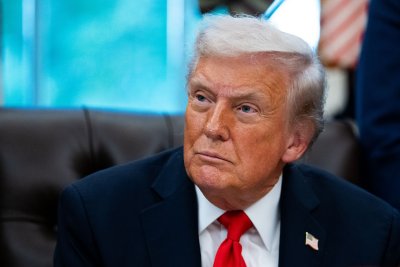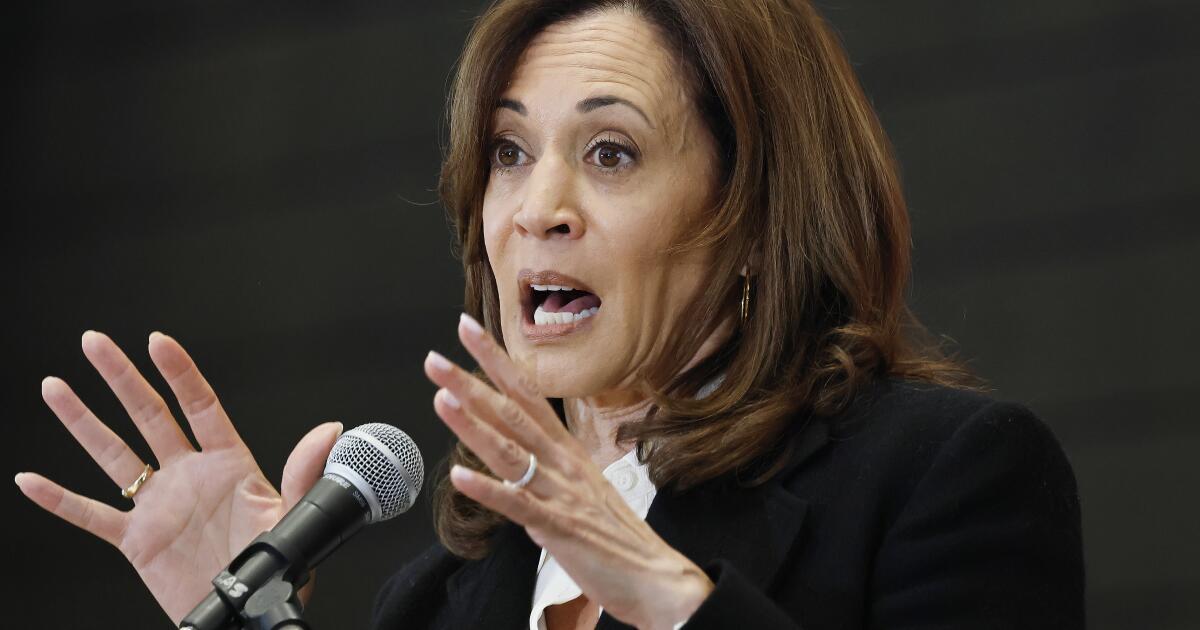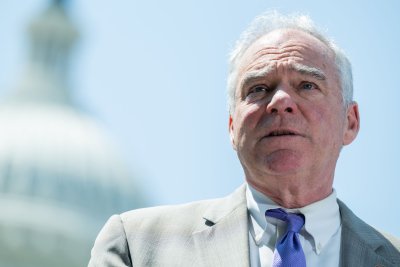By closing one door, Kamala Harris has left another ajar.
Running for California governor in 2026, which she ruled out Wednesday, would almost certainly have precluded another run for the White House in 2028 — something Harris explicitly did not rule out.
There were significant hurdles to attempting both.
To have any chance of being governor, Harris would have almost certainly have had to swear off another presidential bid, convincing California voters that the state’s top political job was not something she viewed, blithely, as a mere placeholder or springboard to the White House.
There also would have been the practical difficulty of running the nation’s most populous state, a maw of endless crises and challenges, while at the same time pursuing the presidency. No California governor has ever done so successfully, though several tried.
Harris’ much-anticipated decision, announced in a written statement, was not a huge surprise.
Unlike others — Pete Wilson, Gray Davis, Arnold Schwarzenegger, to name a few — Harris has never burned with a fever to be California governor. She had a clear shot at the position in 2016, but opted instead to run for the U.S. Senate, in part because the role seemed like a better launching venue for a try at the White House.
Privately, several of those closest to Harris questioned whether she had much appetite to deal with the myriad aggravations of being governor — the stroking and hand-holding of recalcitrant lawmakers, the mind-numbing drafting of an annual budget, the endless march of disasters, both natural and man-made.
Not least, many wondered whether Harris would be content returning to the small stage of Sacramento after traveling the world as vice president and working in the rarefied air of politics at its peak.
There is every possibility that Harris will retire from public life.
Sean Clegg, a longtime Harris advisor, noted the Democrat has spent more than two decades in elected office. “I think she’s interested in exploring how she can have an impact from the outside for a while,” Clegg said.
For her part, Harris said she looked forward “to getting back out and listening to the American people [and] helping Democrats across the nation who will fight fearlessly.”
Doesn’t sound like life in a cloister.
If Harris did run for president, she’d start out as a nominal front-runner, based on her universal name recognition and deep nationwide fundraising base — advantages no other contestant could match. But she won’t scare away very many opponents; the Democratic field in 2028 will probably be a large and expansive one, as it was the first time Harris ran for president in 2020. (And notably crashed and burned.)
Charlie Cook, who has spent decades as a nonpartisan political handicapper, said he would view Harris “as a serious contender, but no more so than a handful of other people would be.”
Normally, Cook went on, her status as the party’s most recent vice president would give her a significant, if not overwhelming, edge. “But I think the desire/need to turn the corner and get some separation from Biden probably strips away any advantage that she would have,” Cook said.
Harris got a small taste of the Biden burden she could carry in the 2028 campaign when two of her prospective gubernatorial rivals — former Los Angeles Mayor Antonio Villaraigosa and former Health and Human Services Secretary Xavier Becerra — suggested she was complicit in covering up Biden’s mental and physical frailties.
“She could say she didn’t know,” Villaraigosa taunted in a May interview. “They can’t prove that she did. But last time I looked, she had lunch with him pretty regularly. … She had to have seen what the world [saw] over time and particularly in that debate. The notion that she didn’t? Come on. Who’s going to buy that?”
A strategist for one potential presidential rival suggested Democrats were eager to turn the page on Biden and, along with him, Harris.
“There’s a lot of respect for her taking on the challenge of cleaning up Biden’s mess in 2024,” said the strategist, who asked to remain nameless to avoid compromising an as-yet-unannounced candidate. “But I think it’s going to be a hard sell. She lost to Donald Trump, who was convicted of 34 felony counts and run out of D.C. in shame. There is some blame there for his return.”
Should Harris make a third try for the White House, it raises the intriguing possibility of facing her fellow Californian, Gov. Gavin Newsom, who has been effectively running for president for the last several months. The two, who came up together in the elbows-out world of San Francisco politics, have had a decades-long rivalry, sharing many of the same donors and, once upon a time, the same set of strategists.
If the two ran, it would be the first time since 1968 that a pair of major Californians faced off for their party’s presidential nomination.
That year, Gov. Ronald Reagan made a late, failed attempt to overtake Richard Nixon, the former vice president and U.S. senator from California.
At it happened, Nixon had waged an unsuccessful 1962 run for California governor after leaving the White House. While that failure didn’t stop him from eventually winning the White House, it certainly didn’t help. In fact, Nixon left California and moved to the East Coast, taking a job at a white-shoe law firm and using New York City as his political base of operations.
Harris’ announcement Wednesday promised “more details in the months ahead about my own plans.” She said nothing about relocating or leaving California behind.






